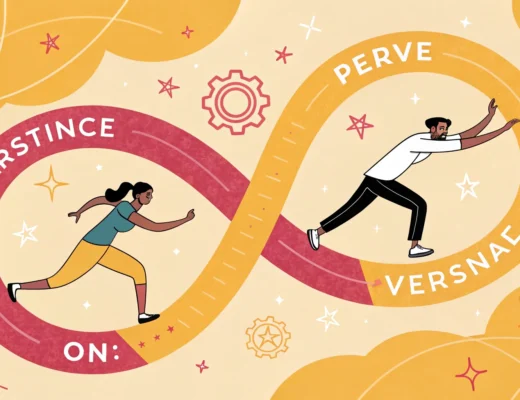Divorce, once considered a taboo subject shrouded in stigma and secrecy, has undergone a profound transformation in societal perception over the past several generations. Where previous eras often viewed divorce as a moral failing or social disgrace, today it is increasingly seen as a personal choice and a pathway to healthier, happier lives.
In previous generations, particularly throughout much of the 19th and early 20th centuries, divorce was rare and heavily stigmatized. Many societies, influenced by religious doctrines and rigid social norms, regarded marriage as a lifelong commitment that should not be broken. Divorce was often accessible only to the wealthy or those who could afford protracted legal battles, and even then, it carried significant social consequences. Women, in particular, bore the brunt of the stigma, frequently facing ostracism or economic hardship if they left their marriages. The idea of a “broken home” was feared, and children from divorced families were often unfairly labeled or pitied.
Changing Times
Fast forward to the late 20th and early 21st centuries, and the landscape has shifted dramatically. Changes in laws, such as the introduction of no-fault divorce, made the process more accessible and less adversarial. Cultural movements advocating for individual rights, gender equality, and personal fulfillment challenged the notion that staying in an unhappy or unhealthy marriage was a virtue in itself. Today, divorce is far more common and openly discussed, with many viewing it as a responsible decision when a marriage no longer serves the well-being of those involved.
Media and popular culture have also played a significant role in normalizing divorce. Movies, television shows, and books often portray divorced individuals leading successful and fulfilling lives, helping to dismantle outdated stereotypes. Social media provides platforms where people share their experiences candidly, fostering communities of support rather than judgment.
Despite these positive changes, the emotional and financial challenges of divorce remain significant. However, the
shift in societal attitudes means that individuals are now more likely to receive empathy and understanding rather than condemnation. Divorce is increasingly recognized not as a failure, but as a complex life event that can lead to growth, new beginnings, and ultimately, happiness.
Who Is In Gen Z?
Generation Z, often referred to as Gen Z, generally encompasses individuals born from the mid-to-late 1990s through the early 2010s. While there’s some variation depending on the source, a commonly accepted range is:
Birth years: Approximately 1997 to 2012
Current ages (as of 2025): About 13 to 28 years old
This generation follows Millennials (born roughly 1981–1996) and precedes Generation Alpha (born in the early 2010s and onward). Gen Z is known for being the first generation to grow up with widespread access to the internet and
digital technology from a young age.
What Is the Divorce Rate for Gen Z?
According to divorce.com, the divorce rate for Generation Z has been declining in recent years. According to recent data, the divorce rate among Gen Z has decreased by approximately 40%, from around 47 divorces per 1,000 people to approximately 27 divorces per 1,000 people. This indicates a significant downward trend in divorces among this younger cohort compared to previous generations at the same age.
This data reflects
changing attitudes toward marriage and divorce among Gen Z, who tend to marry later and approach relationships with different expectations than older generations. Essentially, the fact that few married couples and even fewer are getting married early in their adult lives means fewer divorces.
How Are Divorces Different for Younger People?
Divorce cases among younger individuals often present a distinct set of challenges compared to those experienced by older couples. One of the key differences lies in the financial and family circumstances that many younger divorcing couples face.
Firstly, younger
couples are more likely to have young children or be in the early stages of parenthood when they divorce. This adds a layer of complexity and emotional strain, as decisions around child custody, co-parenting, and child support become central issues. The well-being of children is often a top priority, but
navigating these responsibilities while managing the emotional fallout of divorce can be particularly difficult for younger parents who may still be establishing their own careers and financial stability.
Financially, younger couples typically have fewer accumulated assets than older couples. They may not yet own significant property, have limited
retirement savings, and have fewer investments. This lack of substantial shared wealth means that
dividing assets during divorce is often less about splitting large estates and more about managing day-to-day financial realities. For many younger people, the focus is on
maintaining financial independence and stability after divorce, rather than dividing substantial property.
Debt Factor
Another major factor influencing younger divorces is debt — especially
student loan debt. Many
young adults carry significant student loan balances that continue to impact their financial health during and after divorce. Student loans can complicate divorce proceedings because they are typically considered individual debt, but the financial strain affects both spouses’ ability to rebuild their lives independently. The burden of student debt can delay economic recovery and affect decisions about housing, employment, and future family planning.
The presence of debt and limited assets also means that younger individuals may have fewer resources to cover legal costs, which can make the
divorce process more stressful and drawn out. Additionally, younger couples may lack experience with financial management, making it more challenging to navigate the complexities of dividing debts, understanding the impact of credit, and planning for future financial security.
Emotionally, younger people may also face unique challenges. They are often still developing their identities and life goals, and the divorce rate at this stage can feel like a significant disruption to their personal growth. However, some research suggests that younger generations approach relationships with more openness to change and may be more willing to seek counseling or alternative dispute resolution methods to manage divorce amicably.
In summary, the divorce rate among younger people is shaped by the presence of young children, fewer accumulated assets, and the burden of debt such as student loans. These factors create a distinct financial and emotional landscape that requires careful navigation to ensure both parties can move forward toward stability and well-being.
Do Young People Who Are Getting Divorced Need a Lawyer?
Yes, young people getting divorced often still need a lawyer. Despite generally having fewer assets, they may still face complex issues, such as child custody, child support, and dividing debts, including student loans. A
lawyer helps ensure their rights are protected and that agreements are fair and legally sound. Additionally, legal guidance can simplify the process, reduce stress, and prevent
costly mistakes. Even in amicable divorces, professional advice is valuable to navigate paperwork and court requirements. Ultimately, a lawyer can provide peace of mind and help young divorcing individuals secure a stable financial and emotional future.
Photo by Andrea Piacquadio: Pexels







